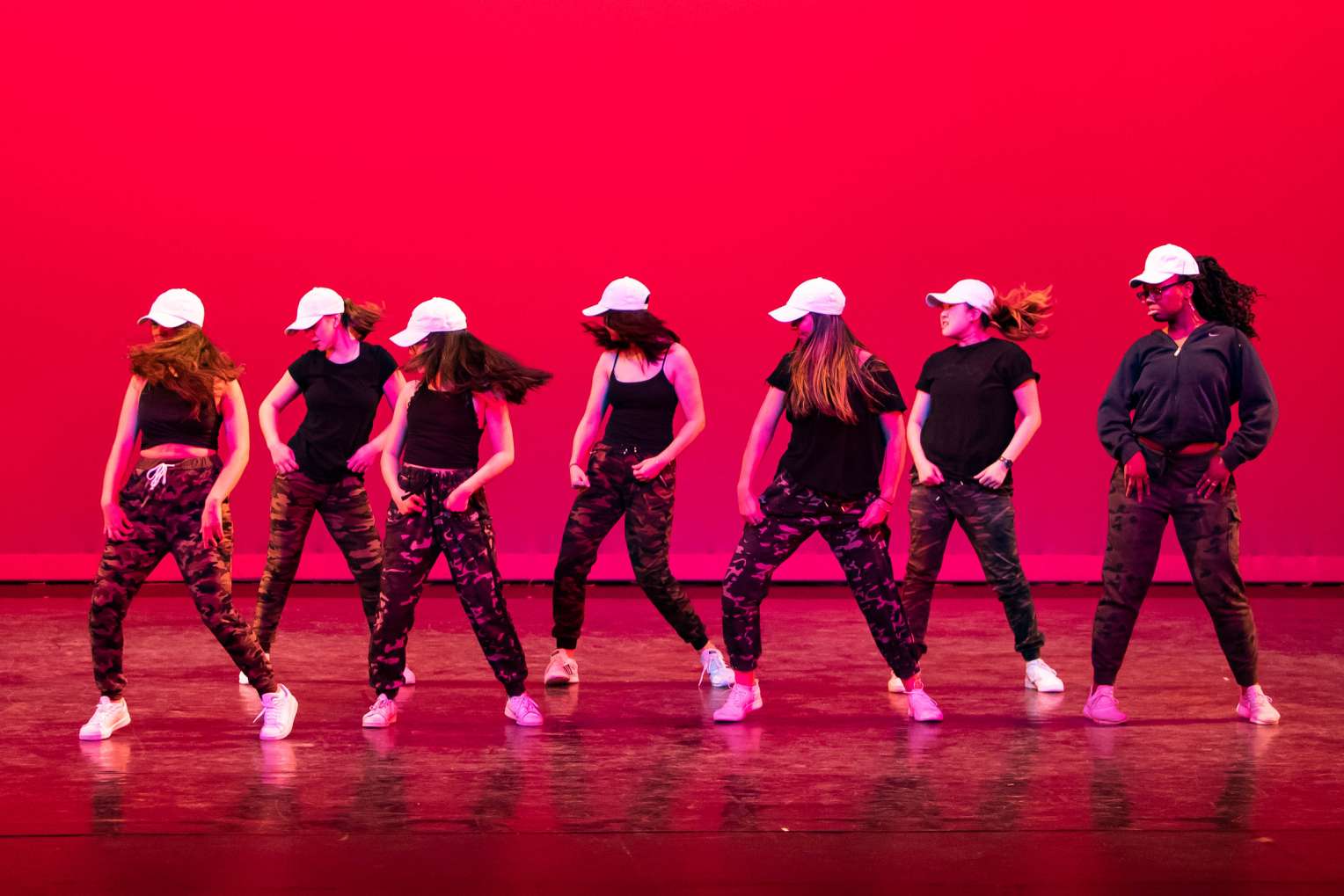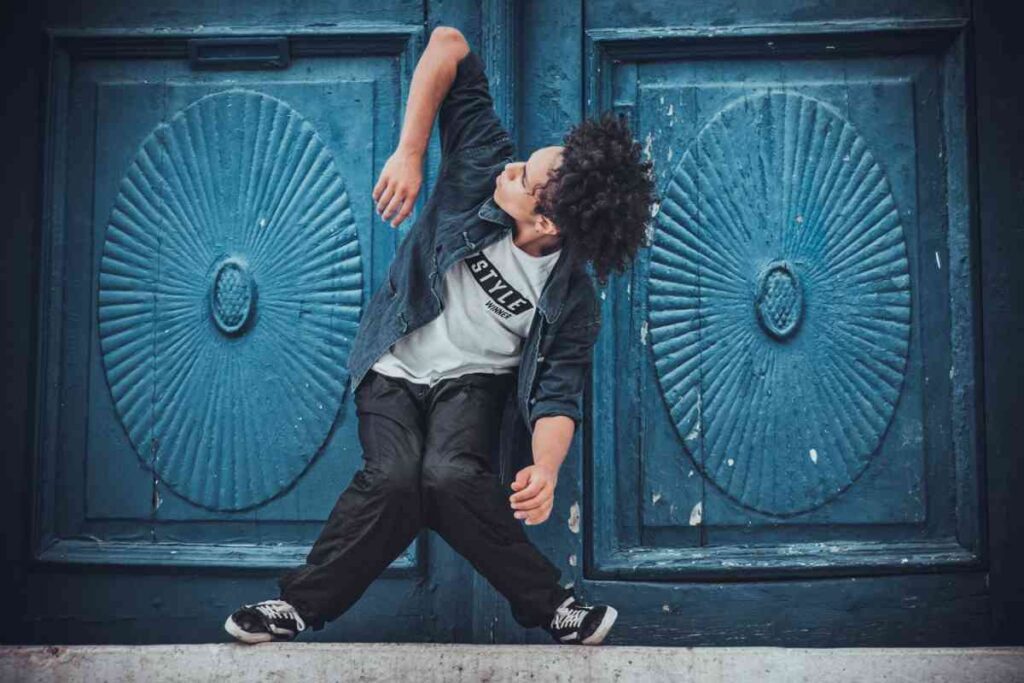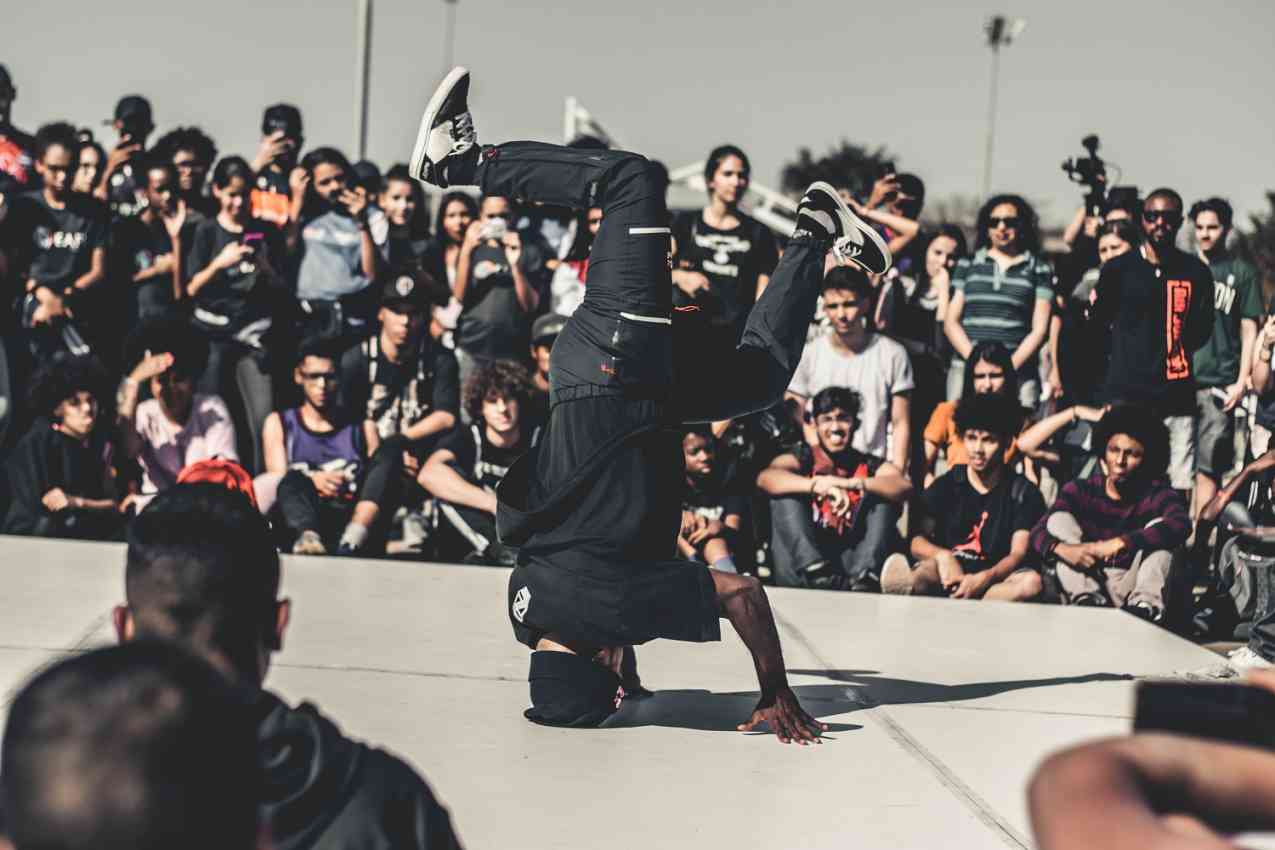Hip-hop dance has evolved far from its humble origins in the Bronx streets to become an international cultural phenomenon. Born out of self-expression, protest, and cultural empowerment movements within African American and Afro-Caribbean communities during the 1970s, it soon spread beyond these borders into mainstream culture, music videos, fashion trends, and beyond.
It is an expression of rhythm, movement, and creativity – an embodiment of street dance – reflecting the social, political, and cultural landscapes from which it hails. From its conception onward, it has provided marginalized communities a platform to express emotions freely while challenging norms imposed upon them and inspiring positive change.



Table of contents
- Hip Hop Dance: Unleashing the Rhythm and Groove
- Hip Hop Dance: A Fusion of Movement and Culture
- Hip Hop Dance first emerged during its origin.
- Breakdancing Achieves New Heights of Success:
- Pop and Lock: Styles that Captivated the World:
- Hip-Hop Dance Has Gone Mainstream:
- Power of Hip Hop Dance: Embracing Resilience, Unity, and Artistic Expression in the Streets:
- Faqs:
- Related Posts
Hip Hop Dance: Unleashing the Rhythm and Groove
Hip Hop Dance is a vibrant and energetic form of artistic expression that has captivated millions around the world. With its origins deeply rooted in African American and Latino communities in the 1970s, Hip Hop Dance has evolved into a global phenomenon, encompassing various styles, techniques, and cultural influences. In this comprehensive article, we will delve into the fascinating world of Hip Hop Dance, exploring its history, styles, notable figures, benefits, and much more. So, put on your dancing shoes, turn up the music, and let’s dive into the rhythmic world of Hip Hop Dance!
Hip Hop Dance: A Fusion of Movement and Culture
Hip Hop Dance is a dynamic art form that emerged from the streets of New York City, specifically the Bronx, during the 1970s. It developed as a creative outlet for marginalized communities, providing a platform for self-expression, storytelling, and cultural representation. This dance style embodies the spirit of rebellion, resilience, and innovation, making it a powerful tool for social commentary and personal empowerment.
A Historical Journey of Hip Hop: From the Streets to Global Dominance
Hip-hop culture, comprising music, art, fashion, and dance has emerged as one of the most powerful forces in contemporary society. A key aspect of this movement is hip-hop dance; we will trace its history here by looking into its origins, evolution, and cultural impact over time; starting in New York’s Bronx but ultimately reaching global relevance – we will uncover its transformative power while honoring those pioneers that helped shaped its path forward.
Hip Hop Dance first emerged during its origin.
It has its origins in the challenging social and economic conditions of the 1970s Bronx. To express creativity and escape, African-American and Afro-Caribbean communities used dance as a powerful means of self-expression and cultural identity formation. Parties and block parties became the hubs of this new movement where DJs would spin records, MCs rhymed rhymes, and dancers would show off their skills.
Breakdancing Achieves New Heights of Success:
Breakdancing has long been one of the signature styles associated with this. Hailing from New York’s Bronx, breakdancing mesmerized audiences with its gravity-defying acrobatics, intricate footwork, and dynamic power moves. B-boys and b-girls engaged in battles between themselves, showing off their athleticism, creativity, and athleticism with freezes, headspins, windmills, and backflips, providing dancers an outlet to express themselves individually while also helping them establish themselves within hip-hop culture.



Pop and Lock: Styles that Captivated the World:
Hip-hop dance evolved rapidly as other styles such as popping and locking developed alongside breakdancing. Popping involves quickly contracting and releasing muscles for an audible pop while locking is defined by distinct pauses and exaggerated poses. Both styles gained widespread recognition thanks to influential dance crews such as The Electric Boogaloos and The Lockers who mesmerized audiences through their precision, musicality, and innovative techniques; providing audiences across the world with something different from conventional hip-hop dancing performances.
Hip-Hop Dance Has Gone Mainstream:
By the 1980s, hip-hop dance had moved beyond street performance into mainstream society. It quickly became part of music videos, television shows, and movies – further popularizing it among a wider audience. Artists such as Michael Jackson made street dance iconic with groundbreaking videos featuring elements of street dancing such as Michael Jackson’s “Thriller”. As its visibility grew so did its influence and cultural impact on popular culture such as fashion and music.
It is an international street dance form that transcends geographical borders, uniting urban communities throughout the globe. It has spread across continents, merging with local cultures and traditions while giving rise to unique interpretations and styles – from New York streets to Brazil favelas, Paris neighborhoods, and South African townships; hip hop remains a powerful form of artistic expression and cultural exchange.
Power of Hip Hop Dance: Embracing Resilience, Unity, and Artistic Expression in the Streets:
Hip-hop dance as street dance is more than mere movements; it embodies social, political, and cultural realities that capture individuals’ resilience, creativity, and defiance in facing adversity. Furthermore, it amplifies voices while breaking down barriers while forging unity – reminding us all that streets can serve as spaces of empowerment, transformation, and celebration.
Hip-hop dance as a street dance form adds life and passion to urban landscapes, filling them with rhythmic expression and artistic passion. Hip-hop dance’s roots lie deep within its streets where movement becomes a story; individual dancers become storytellers who share these narratives with future generations through performance art.



Health and Fitness Benefits of Hip-Hop Dance
Hip-hop dance, first popularized on the streets of New York City, has quickly become a global phenomenon. Through infectious beats, dynamic movements, and powerful storytelling techniques, it has become a universal language, uniting people of diverse backgrounds while inspiring movements worldwide. We will examine the diverse impacts of hip-hop dance: its ability to bridge cultures and foster social change while shaping popular culture and artistic expression alike.
Cultural Fusion and Exchange:
It stands out as an impressive symbol of cultural fusion and exchange, melting together different cultural identities seamlessly as it traveled beyond its origins. It adapted to local traditions, music styles, and styles it encountered along its path – from Latin dance forms like salsa and reggaeton in Latin America to its incorporation of traditional African elements in West Africa – thus becoming an agent for cultural exchange, creating new narratives among diverse communities while furthering mutual understanding between them all.
Social Empowerment and Activism:
It has long been associated with social empowerment and activism. It provides marginalized communities a platform to voice their concerns, express themselves freely, and advocate for social change through its movements. Hip-hop dancers have used dance to shine a light on issues like racial inequality, social injustice, and gender discrimination as well as use dance to challenge stereotypes, break down barriers and build resilience and unity among those who may otherwise remain silent or excluded.
Youth Empowerment and Education:
This dance has played an essential role in empowering and engaging young people around the world, from its inclusive yet accessible nature, providing a positive outlet for self-expression, creativity, and personal development. Hip-hop programs and initiatives have emerged worldwide as an innovative method of engaging at-risk youth through dance while providing education programs, discipline training programs, team-building initiatives, and discipline reinforcement – giving young individuals purpose, self-confidence, alternative pathways, and protective shields against harmful influences.
Influences on Popular Culture:
It has left an indelible mark on popular culture. From music videos and movies to movies, television shows, and commercials, commercials, and commercials; shaping trends, fashion, and entertainment. It is innovative choreography and infectious energy has mesmerized audiences worldwide and influenced music as well as fashion advertising sports industries and even politics. From iconic music videos featuring intricate dance routines to high-profile competitions with global fame; It is undeniably an integral force in shaping mainstream culture today.
Artistic Expression and Innovation:
Hip-hop dance continues to break boundaries and evolve as an art form. Dancers and choreographers from around the globe continue pushing creative limits, exploring new movements, and combining various dance styles into innovative fusions. It is more than entertainment – it offers dancers an outlet to express themselves artistically through storytelling, emotion, and personal interpretation through movement. It provides dancers a platform where they can explore identities, challenge conventions, and demonstrate unique voices through movement.
Faqs:
Hip Hop Dance is an energetic and expressive dance style that originated in urban communities. It encompasses a wide range of street dance styles, including breaking, popping, locking, and krumping. Hip Hop Dance is characterized by its dynamic movements, rhythmic footwork, and individual style.
Absolutely! It is open to everyone, regardless of age or experience. Whether you’re a beginner or have previous dance training, Hip Hop classes are designed to cater to different skill levels. It’s a great way to have fun, stay active, and explore your creativity through dance.
Learning this dance offers numerous benefits. It improves strength, flexibility, and coordination. Hip It is also a fantastic cardio workout that helps boost endurance and overall fitness. Additionally, it enhances musicality, rhythm, and self-expression, allowing dancers to develop their unique style and personality.
it encompasses both freestyle and choreographed routines. Freestyle allows dancers to express themselves spontaneously and improvise their movements to the music. Choreographed routines involve learning and performing specific moves and sequences, often seen in dance performances, music videos, and competitions.
